The software engineer job market is competitive, and the skills required for success in this field are constantly evolving. The rise of artificial intelligence, big data, and other cutting-edge technologies has reshaped the job market and forced software engineers to stay current with new developments and advancements in their field. As such, if you’re looking to break into the software engineer field or advance your career, you will need an impressive resume to help you stand out from the crowd. A well-crafted resume can make all the difference when you’re hunting for your next software engineer job opportunity. This blog will walk you through designing an eye-catching resume showcasing your skills as a software engineer candidate. We’ll cover what makes a great software engineer resume and give examples of various versions with tips on making yours even better!
Senior Software Engineer Resume Example
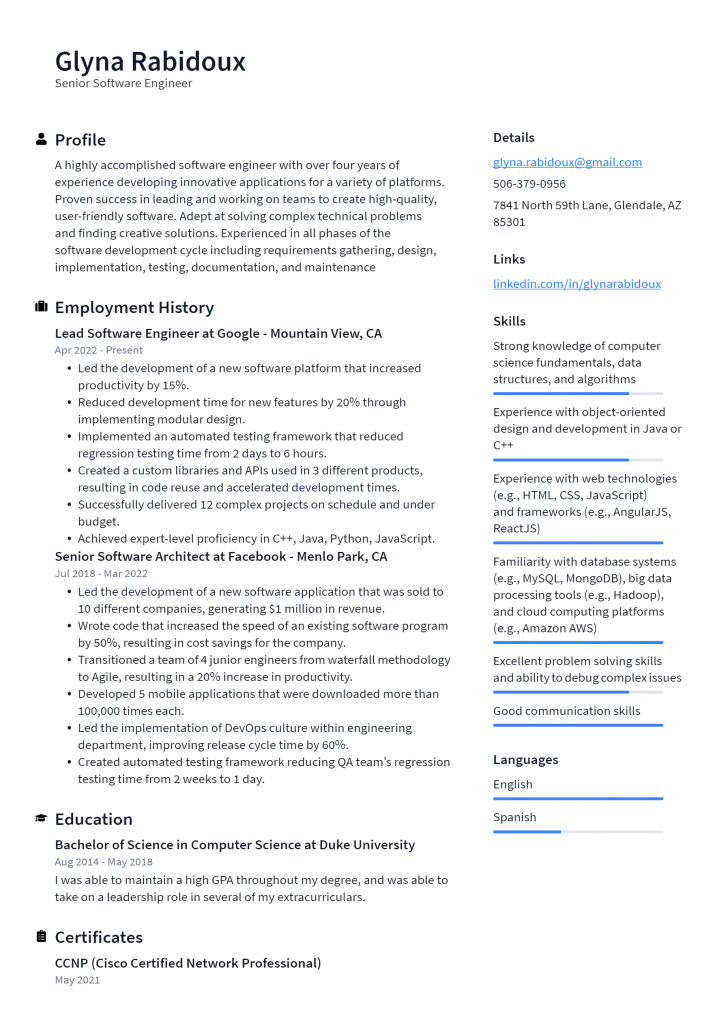
Download This Senior Software Engineer Resume as PDF
Senior Software Developer Resume Example
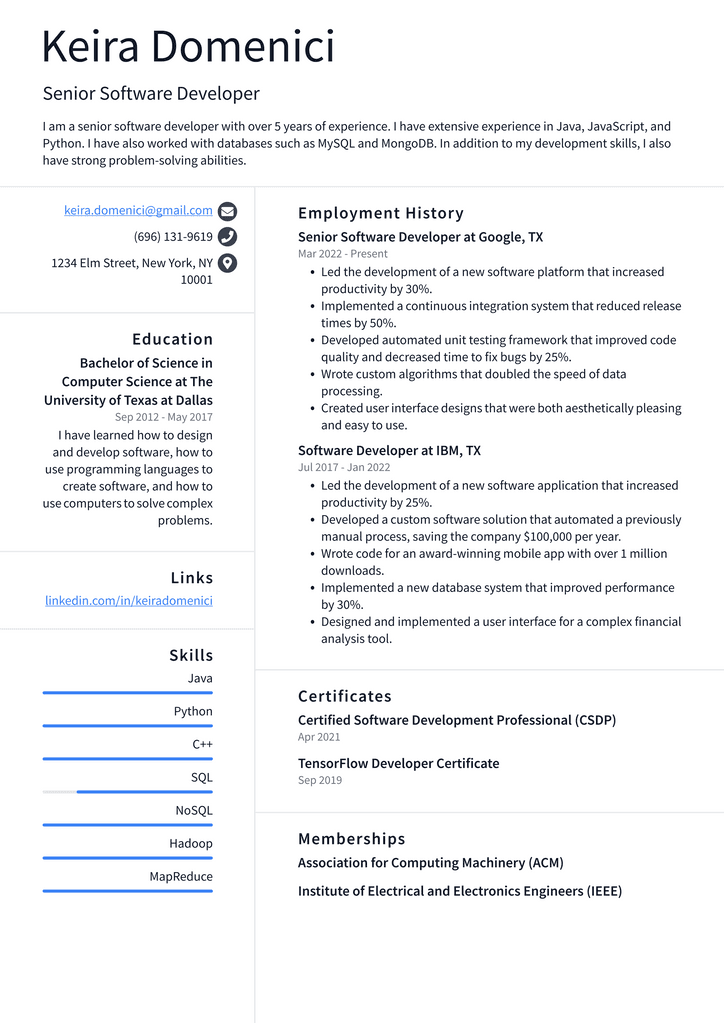
Download This Senior Software Developer Resume as PDF
Software Development Manager Resume Example
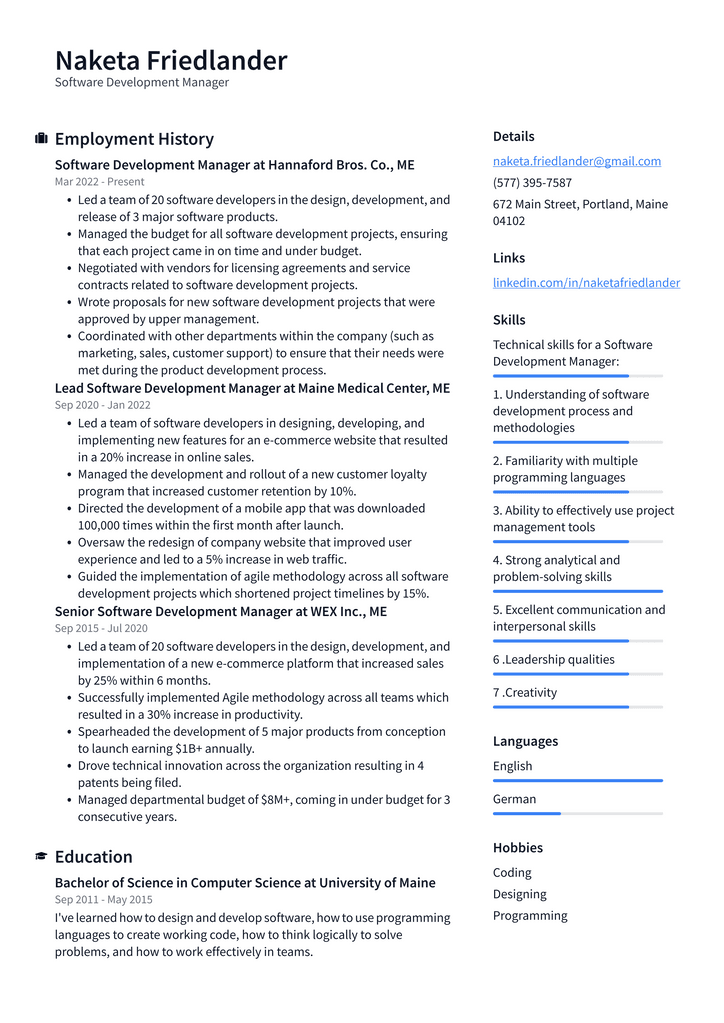
Download This Software Development Manager Resume as PDF
Vice President of Engineering Resume Example
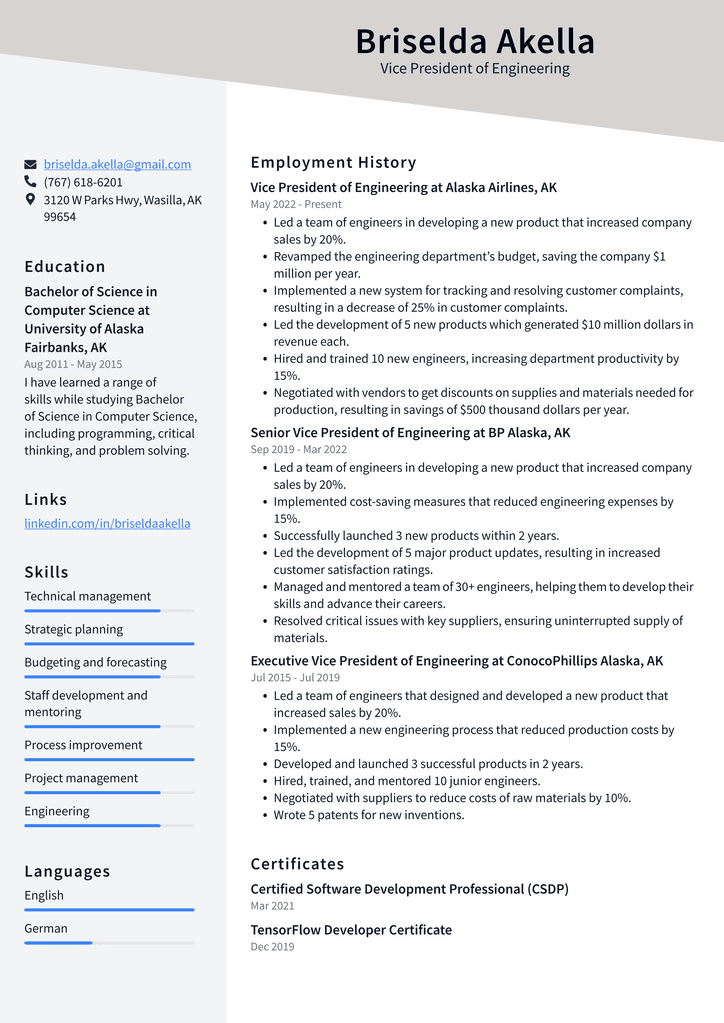
Download This Vice President of Engineering Resume as PDF
Software Engineering Manager Resume Example

Download This Software Engineering Manager Resume as PDF
Lead Software Engineer Resume Example
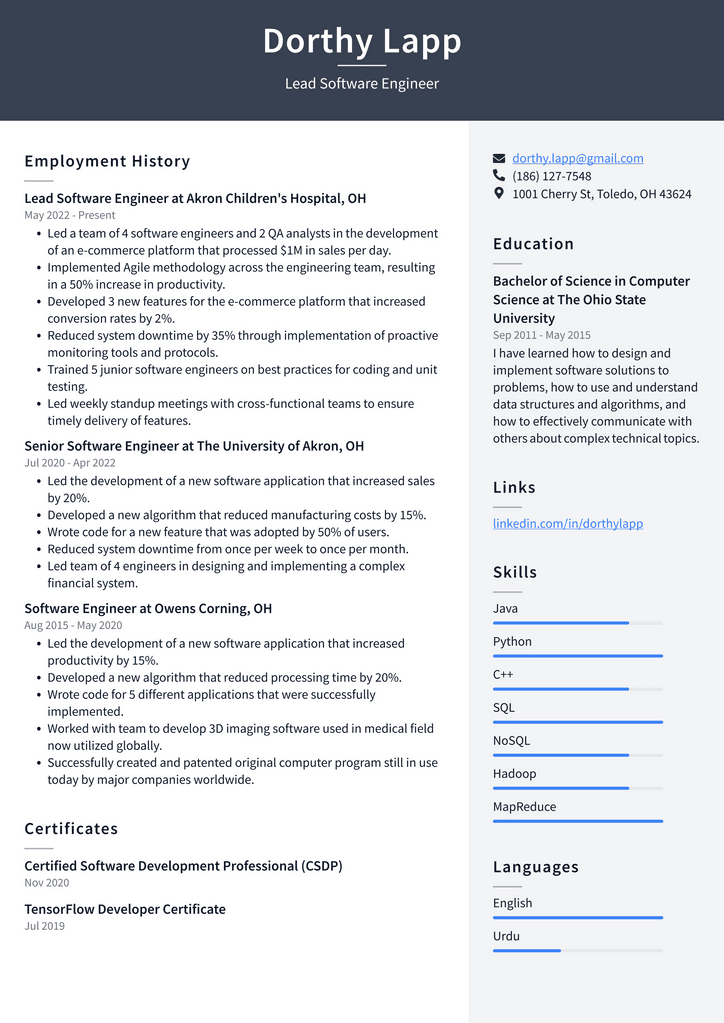
Download This Lead Software Engineer Resume as PDF
Chief Software Engineer Resume Example
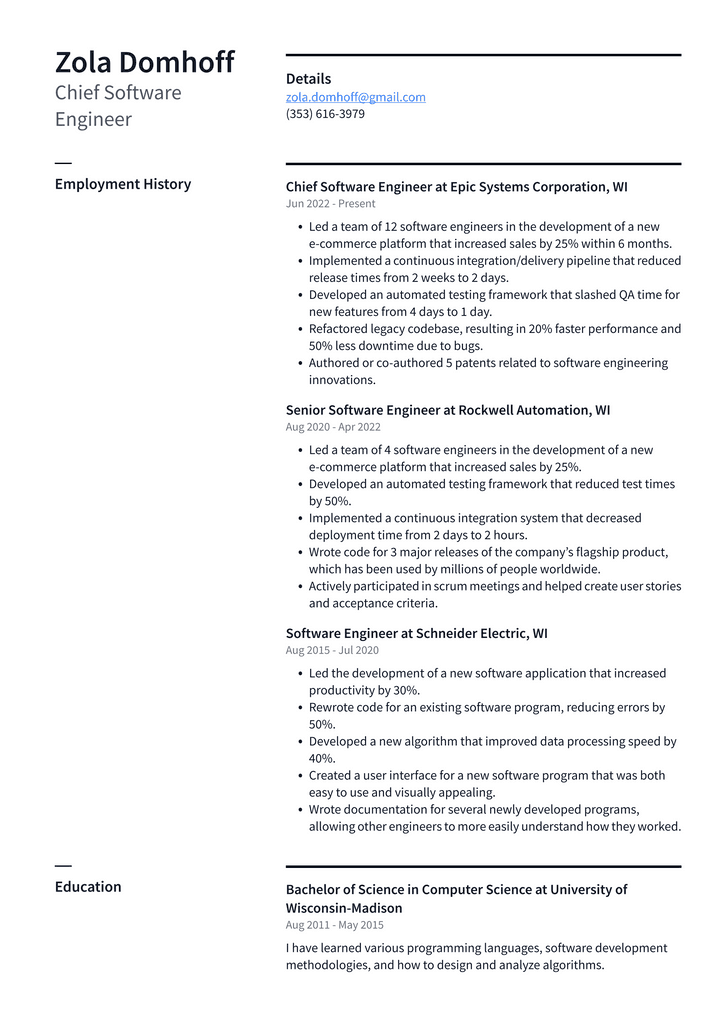
Download This Chief Software Engineer Resume as PDF
What to Include in Your Software Engineer Resume
When writing your resume, you’ll need to decide which skills to include in your software engineer resume. When deciding what to include in your software engineer resume, you’ll want to focus on your most recent experience and skills. If you’ve been in the workforce for a long time and held many different positions, you might wonder if you should put all your experience on your resume. Although it’s up to you, most hiring managers prefer to see a summary that focuses on your most recent experience and does not include unrelated jobs from many years ago. Your software engineer resume should consist of your work history and education. As we’ll discuss in more detail below, it’s essential to keep your resume accessible to read by including these sections at the top.
Summary of Skills
Once you know what you want to include in your software engineer resume, it’s time to start writing the body of your resume. The first section you should include in your software engineer resume is a summary of your skills. A skills summary is a short section at the top of your resume that summarizes your most relevant skills. It’s an opportunity to highlight your most vital skills as they relate to the job you’re applying for. A good skills summary is brief, relevant, and memorable. When writing this section, think about the skills a software engineer needs—and what hiring managers are looking for.
Professional Experience
The following section you’ll want to include in your software engineer resume is your professional experience. This section will contain information about the job titles you’ve held, the companies you’ve worked for, the dates you worked for each company, and your roles at each company. For each job you’ve saved, you should include the following information: – Job title – The job title you held at each company. For example, if you were a software engineer at company X, your job title would be a software engineer at company X. – Company – The company you worked for at the time. – Dates – The dates you worked at each company and job title. – Summary – A one-sentence summary of your job at each company. This is helpful for readers who scan your resume and want an overview of your employment history.
Education
You’ll want to include the next section of your resume in your education. This section should include the name of the degree you earned, the date you graduated, your major, and any honors or scholarships you received. This section is optional, but including it can help demonstrate that you are a well-rounded and highly skilled candidate. If you’re switching careers, you might want to leave your education or only include the degree you’ll be using for the new job. If you’re changing careers and want to have your education, it’s essential to be strategic about what you include and how you present it.
Additional Sections
After you’ve written the top sections of your resume, you can include any additional sections you think will help you stand out as a candidate. We’ve included some standard sections and their suggestions below: – Additional Skills – If you have other skills related to the position you are applying for, you can list them in a separate section titled “Additional Skills” or “Skills.” You can also use this section to list any certifications you have earned. – Awards and Honors – If you have won any awards or been recognized for excellence in your field, you can include this in a separate section titled “Awards and Honors.” You can also include any scholarships you received to help finance your education.
Tips for Writing a Software Engineer Resume
Now that you know what sections to include in your software engineer resume, it’s time to write the actual resume. While a resume’s overall format and content may vary slightly depending on your field, every resume should have certain sections. You can follow these tips to ensure your software engineer resume stays relevant and helpful. – Keep it Simple – One of the biggest mistakes you can make when writing your resume is trying to be too fancy with the formatting. A resume is meant to be easy to read, and the simpler your resume is, the easier it will be to read. Avoid using colors, fancy fonts, and complicated layouts. – Be Honest – It’s essential, to be honest on your resume, but that doesn’t mean you have to be 100% truthful. For example, if you were fired from a job and didn’t want to put it on your resume, you can put something like “left due to a job change.” – Maximize Impact – Make sure the most important information appears at the top of your resume. That includes your name, the name of the company you’re applying for, and your address and phone number.
Summing Up
The software engineer job market is competitive, and the skills required for success in this field are constantly evolving. To break into the software engineer field or advance your career, you will need an impressive resume to help you stand out from the crowd. A well-crafted resume can make all the difference when you’re hunting for your next software engineer job opportunity. This blog will walk you through designing an eye-catching resume showcasing your skills as a software engineer candidate. We’ll cover what makes a great software engineer resume and give you examples of various versions with tips on making yours even better!